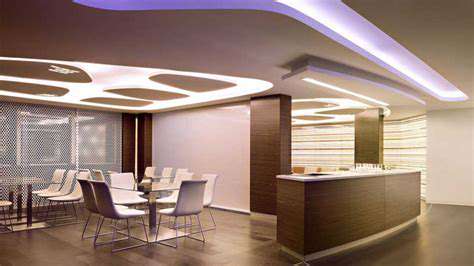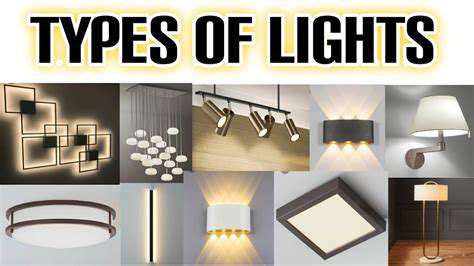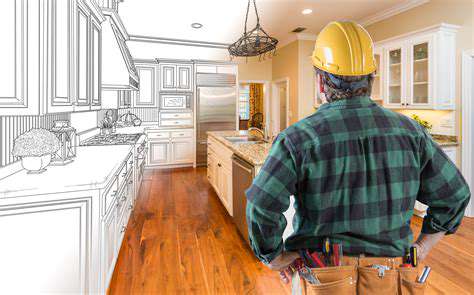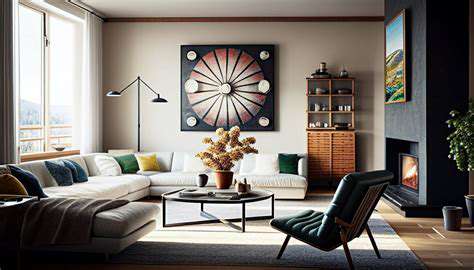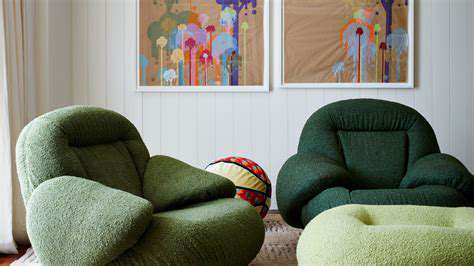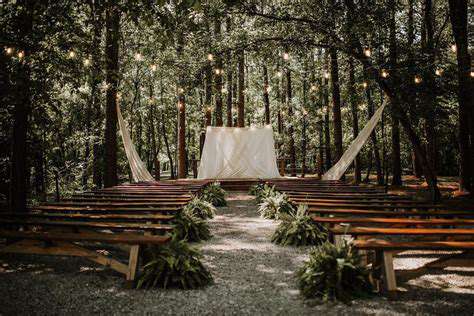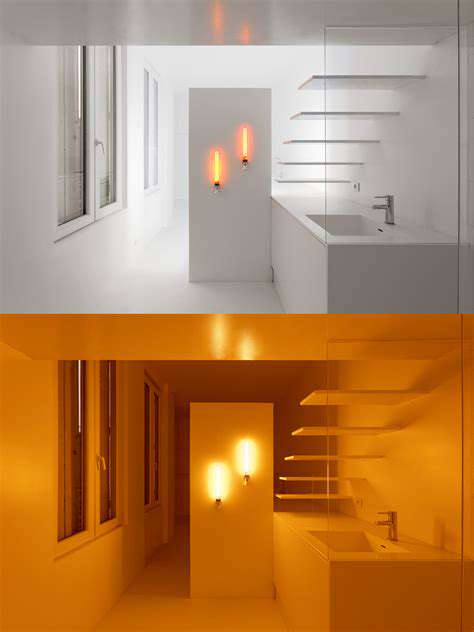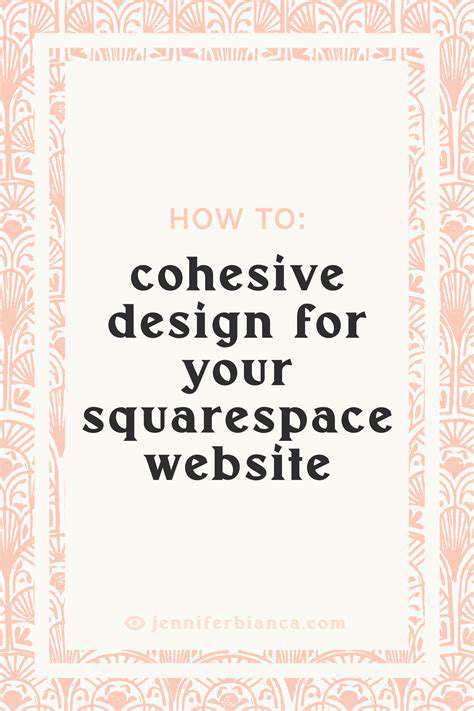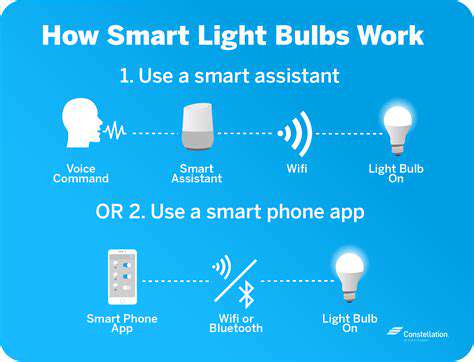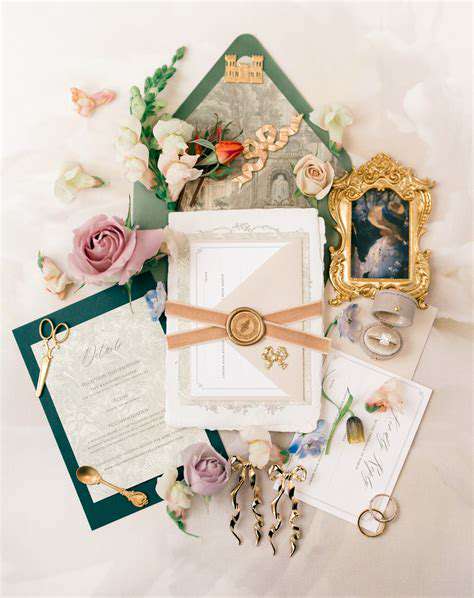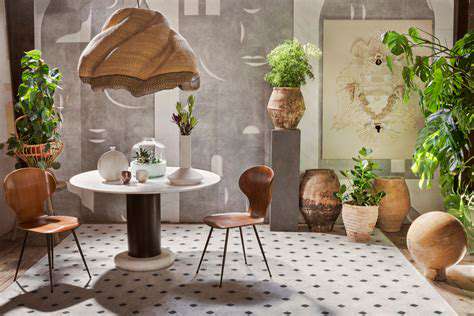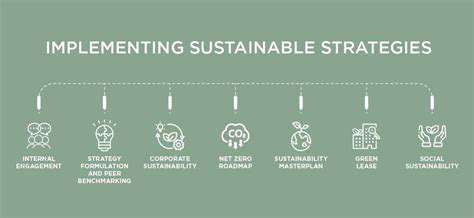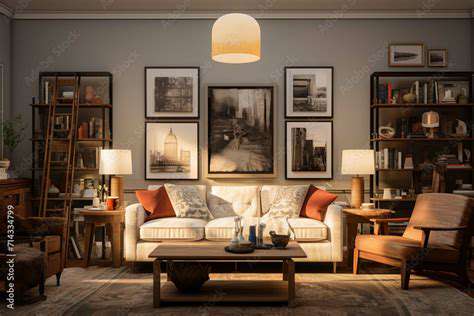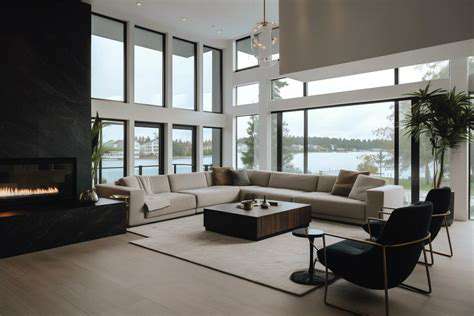your ultimate resource for full package home renovation and interior design. We provide comprehensive insights and actionable tips—from selecting the best soft furnishings and energy-efficient lighting to creating personalized home themes and achieving contemporary aesthetics. Whether you're a first-time renovator or a seasoned design enthusiast, our expert articles guide you through every step of transforming your living space. Join us and explore the best practices, trends, and strategies to make your dream home a reality.
The Importance of Professional Lighting DesignProfessional lighting design goes beyond merely placing fixtures in a space; it involves a comprehensive understanding of the environment to create functional and aesthetically pleasing results. Expert lighting designers take into account factors such as purpose, aesthetics, and energy efficiency, which are crucial in enhancing usability, ambiance, and safety. Understanding Professional Lighting DesignEffective lighting can increase productivity in workspaces by as much as 20%. Properly planned lighting solutions mitigate issues like glare and shadows, resulting in comfortable and efficient environments. This is particularly vital in commercial settings where the right lighting fosters better performance. The Role of Energy EfficiencyIn our environmentally aware society, energy-efficient lighting design is paramount. Integrating solutions like LED fixtures reduces energy consumption significantly, leading to lower operational costs and a lower ecological footprint. LED lighting is known to consume up to 75% less energy compared to traditional incandescent bulbs, thus making a noticeable impact on both costs and the environment. Enhancing Aesthetics Through Thoughtful DesignA well-implemented lighting design accentuates architectural features and helps establish the desired mood of a space. By employing varied layers of lighting—ambient, task, and accent—designers can create inviting and functional areas that showcase key elements while minimizing unattractive spots. Lighting Design Tailored to Different EnvironmentsEach environment has specific lighting needs. For example, kitchens require bright task lighting for cooking, whereas living rooms benefit from softer illumination for relaxation. Customized approaches ensure that each area’s unique functionalities are met, enhancing not only aesthetic appeal but also comfort and satisfaction. The Impact of TechnologyAdvancements in technology have transformed lighting design. Smart lighting systems offer increased control and adaptability through features such as occupancy sensors and mobile app controls, promoting energy savings while enhancing user experiences. These technologies streamline management and integrate with modern lifestyle needs. Collaboration for SuccessSuccessful lighting design relies heavily on collaboration between designers and clients. Engaging clients throughout the process ensures that their vision is realized and that the solutions provided are perfectly tailored to their needs. Educating clients on energy-efficient options and emerging trends empowers informed decision-making. Sustainable Practices in Lighting DesignSourcing materials responsibly and incorporating energy-efficient technologies are key components of sustainable lighting design. Utilizing LEDs and maximizing natural light helps reduce reliance on artificial lighting, resulting in both cost savings and an enhanced user experience. Retrofitting existing systems with energy-efficient options can lead to significant energy reductions, promoting a sustainable future. Benefits of Comprehensive Lighting Design ServicesEngaging comprehensive lighting design services can lead to notable improvements in energy efficiency, aesthetic appeal, and long-term savings. With a tailored approach, professional designers create functional and beautiful spaces that resonate with users, while innovative technologies ensure sustainability and cost-effectiveness.Invest in professional lighting design today to transform your space into a well-lit area that meets both practical and aesthetic needs, while also embracing energy-efficient practices for a sustainable future.
Mar 20, 2025
Choosing the Right Full Package Services for Your Home MakeoverTransforming your home into the sanctuary you've always envisioned starts with understanding and selecting the right full package services. These comprehensive offerings streamline your renovation experience, including design, project management, and execution, allowing you to avoid the stress of juggling multiple contractors. Understanding Full Package ServicesFull package services provide a cohesive approach to home makeovers. With a team of experts in design, construction, and decoration, you can achieve a seamless integration of your vision. By working collaboratively, these professionals minimize delays and ensure every detail aligns perfectly with your goals. Benefits of a Customized Design ApproachOpting for a customized design showcases your unique style and functional needs. Research indicates that homes with tailored features can sell for significantly more—about 12% higher than comparable properties. Custom solutions not only improve home aesthetics but also enhance resale value, making them a wise investment. Evaluating Potential Service ProvidersChoosing the right service provider is crucial. Review their portfolios and client testimonials to assess their experience and satisfaction rates. A transparent design process that incorporates your feedback will enhance your renovation journey. Ask potential providers about timelines, budgets, and their strategies for handling unexpected challenges. Budgeting for Your Home MakeoverEstablishing a clear budget before starting your home makeover is vital. Break down your vision into manageable priorities and allocate funds wisely, ensuring to set aside 10-20% for unforeseen expenses. This proactive approach helps maintain financial control while achieving quality results. Design Trends to ConsiderKeeping up with design trends can inspire your makeover. Biophilic design, which emphasizes natural elements within indoor spaces, and sustainable practices, like using eco-friendly materials, are gaining popularity. Integrating these elements not only promotes well-being but also shows a commitment to the environment. Project Management ConsiderationsEffective project management is key to avoiding disruptions during your home renovation. A professional provider should establish clear timelines, provide regular updates, and proactively address issues. Maintain open lines of communication with your team to ensure alignment and a smooth workflow. Post-Renovation Tips for Maintaining Your SpaceAfter your makeover, regular maintenance is crucial to preserving your investment. Establish a care routine for different areas of your home and consider incorporating personal touches, like artwork, that reflect your personality and enhance your space's overall atmosphere. The Importance of Custom Theme DesignCustom themes extend beyond aesthetics; they enhance your property's functionality and appeal. A well-executed custom theme can increase your home’s value and truly express your lifestyle needs. Collaborating with professional designers ensures that your vision incorporates current trends while maintaining practicality. ConclusionEmbarking on a home makeover with full package services and a customized design approach can transform your living space into a reflection of your personal style. By carefully evaluating service providers, budgeting wisely, and staying informed about design trends, you'll not only enhance the beauty of your home but also increase its value for years to come. Start your renovation journey today for a home that embodies your unique taste and lifestyle.
Mar 20, 2025
ambient, task, and accent lighting. Ambient lighting provides overall illumination, task lighting focuses on specific tasks, and accent lighting highlights particular elements. A harmonious balance creates mood and enhances functionality across living spaces. Technological IntegrationThe integration of smart lighting technologies provides enhanced convenience and personalization, allowing homeowners to control brightness and color with ease. This adaptability contributes to improved satisfaction while offering increased security features. Choosing the Right FixturesSelecting suitable lighting fixtures is crucial. Chandeliers, pendant lights, recessed, and track lighting all serve different purposes and contribute to your home’s aesthetic. Understanding the nuances of each type helps achieve a cohesive look that can elevate an entire space. Professional Installation BenefitsProper installation is key to maximizing the effectiveness of your lighting design. Expert installers ensure compliance with safety standards and perform installations efficiently. Post-installation maintenance is equally important, as regular checks can prolong the life of your lighting fixtures and maintain their performance. ConclusionInvesting in professional lighting design transforms your home environment, enhancing aesthetics, functionality, and energy efficiency. Engaging with expert designers not only delivers personalized solutions but also ensures that your lighting design remains compliant and future-proof. Explore the benefits today and make the next step towards creating a beautifully lit home.
Mar 20, 2025
A Comprehensive Guide to Elevating Your Space Discover the Importance of Ambient LightingAmbient lighting serves as the cornerstone of any well-designed space. It sets the stage by providing essential illumination, guiding you safely through your home while creating a welcoming atmosphere. Without proper ambient lighting, areas can feel dark and uninviting. Sources of ambient light range from ceiling fixtures and wall sconces to natural light streaming through windows, all contributing to a balanced level of brightness that enhances comfort. Types of Ambient Lighting FixturesChoosing the right ambient lighting fixtures is crucial for achieving both functionality and style. Options include:- Crown-mounted ceiling fixtures- Recessed lighting- Chandeliers- Floor lamps- Wall-mounted fixturesWhen selecting your lighting, consider the room’s design theme to create a cohesive look that amplifies your decor. Optimizing Brightness and Color TemperatureThe mood of your room largely depends on the brightness and color temperature of your ambient lighting. Measured in lumens, brightness requirements can differ by space; living rooms typically need 100-300 lumens, while kitchens may require 300-500. Additionally, consider color temperature; warmer tones (around 2700K) create a cozy vibe, while cooler ones (above 4000K) energize the atmosphere. Integrating Ambient with Accent and Task LightingTo achieve a harmonious lighting design, combine ambient lighting with accent and task lighting. While ambient lighting provides overall brightness, accent lighting focuses on specific features like artwork, and task lighting illuminates areas for activities such as reading or cooking. Layering these types ensures that your space is functional and visually appealing. Practical Tips for Effective Lighting DesignWhen designing your ambient lighting, remember to layer various sources to avoid harsh shadows or overly bright spots. Position fixtures strategically based on functional areas and consider using dimmers for added flexibility. Regularly reassessing your lighting can lead to ongoing improvements, ensuring your home remains inviting. Accent Lighting: Highlighting FeaturesAccent lighting complements ambient lighting by directing attention to specific architectural features and decor elements. Whether in a gallery or your living space, carefully placed accent lights can elevate the ambiance, turning ordinary areas into focal points. Task Lighting: Enhancing FunctionalityTask lighting is essential for focused activities such as reading or cooking. Proper placement minimizes shadows and allows maximum comfort using targeted light sources like desk lamps or under-cabinet lights. The right task lighting improves productivity and makes performing daily tasks safer and more enjoyable. Striking the Perfect BalanceCombining ambient, accent, and task lighting requires thoughtful planning. Begin with ambient light, layer in task lighting for functional needs, and finish with accent lights to create depth and interest. Tailoring your lighting design to your space’s specific needs will enhance both aesthetic appeal and usability.In conclusion, understanding and implementing the principles of ambient, accent, and task lighting can transform your home into a well-lit, inviting, and functional space. Embrace these lighting strategies to enhance your living environment, and enjoy a brighter, more enjoyable home!
Mar 20, 2025
Importance, Benefits, and Trends Overview of Full Package DesignFull Package Design (FPD) is a comprehensive approach to home renovation that harmonizes architectural design, interior aesthetics, and functionality. By integrating these elements, homeowners create cohesive living spaces that not only enhance property value but also promote usability. Understanding the client’s lifestyle is central to FPD, tailoring solutions that maximize both form and function for everyday living. Advantages of Comprehensive Design PlanningEmploying a strategy of Comprehensive Design Planning is essential for reducing renovation costs. It helps identify problem areas early on, preventing unexpected expenses and unnecessary redesigns during construction. Proper planning can lead to savings of up to 20%, ensuring budgets remain intact and timelines are adhered to. This clear roadmap maintains the homeowner's vision throughout the renovation, leading to a satisfying outcome. The Role of Detailed Construction TrackingMonitoring progress through Detailed Construction Tracking is vital for successful renovations. Utilizing project management tools streamlines the process, allowing stakeholders to access real-time updates, maintain clear communication, and mitigate potential delays. This transparency fosters trust between clients and contractors, facilitating better teamwork and accountability throughout the renovation phases. Challenges in ImplementationWhile FPD offers numerous benefits, challenges can arise, particularly in ensuring all team members share a unified vision. Regular meetings and clear communication can help align interpretations of the client's brief. Moreover, a flexible design can accommodate unforeseen challenges that may surface during the renovation process, ensuring that quality remains paramount. Emerging Trends in Home RenovationThe home renovation sector is seeing a shift toward sustainable and smart designs. Homeowners are increasingly focusing on energy-efficient materials and smart home technology to enhance functionality while optimizing costs. The integration of these innovations not only makes homes more aesthetically pleasing but also improves energy management, signaling a forward-thinking approach to future renovations. Hiring Experts for Renovation ProjectsEngaging qualified professionals for home renovation is crucial. Their expertise not only ensures a high-quality execution of design but also pre-emptively addresses potential challenges, keeping the project within budget and on schedule. Access to a network of trusted suppliers and subcontractors further enhances project efficiency, ensuring each aspect of the renovation is handled by skilled specialists. Finding the Right Renovation ExpertWhen selecting a renovation expert, clarity about your specific needs is essential. Research potential contractors thoroughly, assess their portfolios, and gather references to evaluate their reliability and style. Contracts should be meticulously reviewed for transparency regarding costs, timelines, and responsibilities, protecting both the homeowner and the contractor throughout the project. ConclusionWhether embarking on a minor renovation or a major home overhaul, understanding the principles of Full Package Design and engaging the right professionals can transform your living space into a beautifully functional home. Stay informed about emerging trends and best practices in the renovation industry to make educated decisions that will yield remarkable results for your property.
Mar 20, 2025
A Comprehensive GuideWhen selecting textiles for your home decor, understanding fabric types and their properties is essential. Natural fibers like cotton and linen offer breathability, perfect for casual spaces, while synthetic options like polyester provide durability and stain resistance, ideal for homes with kids or pets. Each fabric has unique traits; for example, velvet introduces luxury, while canvas delivers a rustic vibe. It's important to consider how these fabrics react to light, wear, and cleaning to ensure longevity and aesthetic appeal.Color and Patterns play a critical role in creating the desired mood in a room. Neutral palettes provide versatility, whereas bold colors can inject personality into your space. Patterns also enhance visual interest, and blending geometric designs with solid textiles can balance the aesthetic effectively. It's best to adhere to a strategy using the 80/20 rule—80% neutral tones with 20% bold patterns—to avoid overwhelming the decor.Layering Techniques add depth and texture to your interiors. By strategically placing different textiles, you can create a warm, inviting atmosphere while improving acoustics and comfort. Start with a base like a neutral rug, then complement it with throws and cushions in varying textures. Mixing materials like cotton, linen, velvet, and wool can establish a harmonious blend that balances functionality and design aesthetics.Understanding color theory can further improve your layering technique. Different shades elicit various emotions, with warm colors promoting coziness and cool tones evoking calmness. Use a color wheel to find complementary hues, enhancing visual appeal without sacrificing elegance.Window Treatments are another crucial element in home decor. From blinds to curtains, each type adds different benefits, such as light control or visual softness. Customizing these treatments with unique colors and linings can elevate both aesthetics and functionality, making them energy-efficient by regulating room temperature.When creating focal points, focus on naturally attention-grabbing areas like fireplaces or accent walls. The right soft furnishings can enhance these focal points while adding comfort and layers to your decor. Use various textures and colors to create visual balance and invite interactions.Seasonal updates can rejuvenate your home decor, with colors and fabrics shifting to align with seasonal trends. Embrace floral patterns in spring and cozy textiles in winter to keep your space reflective of the changing environment. Accessorizing with seasonal themes, such as autumnal cushions or springtime table runners, can add character and warmth to your home.In conclusion, mastering the art of choosing and combining textiles can transform your home decor into a stylish, functional space. Regular maintenance and flexibility in your choices will allow your home to remain engaging and reflective of both your personal style and the seasonal trends. By thoughtfully selecting fabrics, colors, and patterns, you can create an inviting atmosphere that resonates with comfort and aesthetic pleasure.
Mar 20, 2025
Transform Your Living Space Understanding Comprehensive Home RenovationComprehensive home renovation is a multifaceted process that enhances the value and aesthetic appeal of your living space. It involves key components such as structural improvements, design integration, soft decoration, and a commitment to sustainability and compliance. Homeowners can expect their spaces to be not only beautiful but also safe and functional, focusing on long-term advantages. Key Aspects of Renovation- Structural Improvements: Reinforce your home's foundation and update essential systems like plumbing and electricals to enhance safety and longevity.- Design Integration: Harmonize new renovations with existing structures for a cohesive aesthetic. Collaborate with architects and designers for a seamless look.- Soft Decoration: Personalize spaces with textiles, furniture, and decorations that echo your unique style.- Sustainability and Compliance: Utilize eco-friendly materials and adhere to local regulations for a responsible renovation approach. Benefits of an Integrated ApproachChoosing a full-package renovation strategy streamlines project management, enhances design cohesion, and ensures quality assurance. Here are some of the key benefits:1. Streamlined Project Management: With a dedicated project manager, communication is simplified, and tasks are scheduled efficiently to minimize delays.2. Cost-Effectiveness: Save money through bulk purchasing and prevent unforeseen errors and miscommunication, leading to up to 15% savings compared to traditional methods.3. Enhanced Design Cohesion: Achieve a polished look by integrating design elements seamlessly through a well-coordinated approach, making sure every detail contributes to the overall aesthetic.4. Quality Assurance: Regular inspections ensure materials and craftsmanship meet high standards, enhancing resale value. Long-Term SatisfactionHomeowners often find profound satisfaction in their transformed living spaces, which adapt beautifully to changing needs over the years. Collaborating with skilled professionals will ensure your renovation reflects both current and future lifestyles. Incorporating Soft Decoration DesignSoft decoration encompasses non-structural elements like textiles and colors that enhance the ambiance of your home. Choosing the right textiles, furniture, and lighting can significantly impact comfort and style. Considerations include:- Textiles: Use materials such as curtains and cushions to add warmth and reduce noise.- Color Palette: Select hues that induce the desired mood and ensure coherence throughout spaces.- Lighting: Implement layered lighting for functionality and to spotlight design features. Personal TouchesIntegrating family memorabilia into soft decoration enriches your home’s narrative and creates inviting environments full of warmth. Choosing the Right ProfessionalsIdentifying appropriate professionals is crucial for a successful renovation. Consider the following steps:1. Define Your Project Needs: Clearly outline your renovation scope and collect essential documentation.2. Research Potential Professionals: Gather a list of specialists with portfolios that align with your design goals.3. Evaluate Credentials: Confirm licenses and look for relevant experience in similar projects.4. Interview Candidates: Assess their communication skills and ability to incorporate your vision. Making Your DecisionAfter a thorough evaluation and interviews, choose the professional who aligns best with your project goals. Establish a comprehensive contract to set clear expectations for the renovation process.---Transform your living space into a haven that reflects your style and meets your needs with a comprehensive home renovation. Embrace the journey to elevate your home's beauty and functionality while ensuring sustainability and compliance.
Mar 20, 2025
A Complete GuideAre you looking to enhance your home’s interior design? Discover how soft furnishings and innovative lighting can transform your living spaces into inviting, stylish environments. This comprehensive guide delves into the essential elements of modern aesthetics, focusing on soft furnishings like curtains, cushions, and upholstery, along with effective lighting strategies. Understanding Soft FurnishingsSoft furnishings are crucial in any interior design scheme, offering not only comfort but also visual appeal. Elements like curtains, drapes, and cushions can amplify the warmth and texture of a room without overshadowing its overall design. Research suggests that well-chosen soft furnishings can enhance a home’s perceived value, making it more appealing to potential buyers. Choosing the Right FabricsWhen it comes to soft furnishings, selecting the right fabrics is key. Durable options like velvet are perfect for upholstery, while lightweight materials like linen are great for decorative pillows. Consider a range of colors, patterns, and textures to harmonize with your existing décor. Color Theory: Set the MoodColor plays a significant role in home aesthetics. Warm tones create vibrant atmospheres, while cooler shades promote tranquility. Using a balanced color palette can evoke the desired emotions, especially in key areas like bedrooms. Layering Textures for DepthLayering various textures enhances visual interest and creates a cozy environment. Incorporate plush cushions, soft throws, and smooth drapes to achieve a multidimensional look that invites relaxation and comfort. Brightening Your Space with LightingLighting choices can dramatically affect how soft furnishings are perceived. Ambient, task, and accent lighting all have important roles in shaping a room's atmosphere. Smart lighting solutions enable homeowners to control brightness and color, optimizing both functionality and energy efficiency. Personalization Through Custom DesignCustom soft furnishings allow homeowners to infuse personal style into their interiors. Online retailers offer options for tailored drapes, unique cushions, and more—ensuring your space reflects individuality while maintaining cohesion. Maintenance and CareTaking care of your soft furnishings and lighting solutions is vital for longevity. Regular cleaning and proper maintenance can help extend the life of your fabrics and ensure they remain in pristine condition. Concluding ThoughtsIncorporate these strategies to create warm, inviting spaces that resonate with your personal style. From understanding the power of soft furnishings to utilizing effective lighting techniques, crafting your dream home has never been more achievable. Explore innovative design elements with a focus on sustainability and comfort for a truly modern aesthetic. Take your home to the next level by embracing the synergy between soft furnishings and lighting. Let your interior design reflect who you are while creating spaces that feel both stylish and welcoming.
Mar 20, 2025
A Guide to Choosing the Right Design ThemePlanning your dream wedding home? It's essential to choose a design theme that resonates with your personal style while ensuring a memorable experience for your guests. This guide will help you explore different design aesthetics, create cohesive color palettes, select soft furnishings, and collaborate with professionals to bring your vision to life. Understanding Different Design AestheticsDesign themes can broadly be categorized into modern, rustic, traditional, and eclectic styles. Each aesthetic brings a unique ambiance: modern embraces minimalism, rustic emphasizes warmth, traditional reflects classic elegance, and eclectic combines diverse elements. Selecting the right aesthetic is vital; it shapes the mood of your celebration and enhances guest experience. Creating a Cohesive Color PaletteA thoughtfully curated color palette sets the tone for your wedding. Consider the season and emotions you wish to convey—soft pastels evoke romance, while bold colors energize the atmosphere. Ensure your colors complement your design theme to create harmony across furnishings and decor. The Role of Soft FurnishingsSoft furnishings like curtains, cushions, and throws enhance both aesthetics and comfort. Selecting high-quality materials can elevate the design, while tailored choices ensure durability against wedding wear and tear. Fabrics such as silk and velvet evoke elegance, while linen offers a more laid-back vibe. Collaborating with ProfessionalsEngaging with interior designers and other experts can streamline the planning process. They offer valuable insights on spatial planning, styling, and color combinations. A well-coordinated team of professionals ensures seamless execution of your design vision, fostering a stress-free wedding experience. Comprehensive Design ConsultationBegin with a detailed consultation to assess your needs and preferences. Utilizing design questionnaires and mood boards allows you to visualize your desired direction, ensuring functionality and flow. Customized Furniture and FixturesSelecting bespoke furniture and fixtures is crucial in crafting an unforgettable ambiance. Collaborate with reputable suppliers to ensure that each piece aligns with the theme while providing comfort for your guests. Soft Furnishings SelectionA key aspect of your design includes choosing soft furnishings that enhance comfort and aesthetics. Select a range of coordinated fabrics, from luxurious drapes to cozy cushions, to create a cohesive and inviting environment. Final Touches for Your Dream Wedding HomeCustomization is central to creating a wedding home that truly reflects you. Personal touches like custom signage and family heirlooms enhance emotional connections. Additionally, effective lighting plays a significant role in setting the mood; incorporate ambient, task, and accent lighting to create a versatile atmosphere. Budgeting for EleganceBe mindful of your budget while aiming for elegance. Invest time in exploration and collaboration with professionals to maximize aesthetics and functionality without overspending.By focusing on these key aspects of design, you can craft a beautiful and memorable setting for your wedding celebration. Bring your dream to life with the right design theme, and create an unforgettable experience for you and your guests.
Mar 20, 2025
Understanding the Importance of Space Optimization in Modern HomesIn an era of increasing urban density and smaller living spaces, optimizing space has become a vital aspect of modern home design. This comprehensive guide explores the current trends in space optimization, custom layout solutions, and the integration of smart technology. Assessing Current TrendsAs homes shrink in size, homeowners and designers seek innovative solutions to maximize usable space. Multifunctional furniture, such as wall beds and expandable tables, has shifted from an option to a necessity. Additionally, smart home technologies now play a crucial role in enhancing space efficiency, with devices that facilitate better utilization of available areas. Customized Layout SolutionsEvery household is unique, and custom layouts cater to individual needs. By assessing family size, lifestyle, and preferences, homeowners can create spaces that offer both comfort and efficiency. Whether you opt for open-concept designs for social gatherings or segmented layouts for privacy, the right approach fosters a smoother flow and easier movement throughout the home. Integrating Smart TechnologySmart technology enhances everyday living by managing appliances, lighting, and security with ease. Automated systems can adapt to your routine while maximizing energy efficiency. From smart thermostats to app-controlled lighting, these features not only streamline day-to-day tasks but also contribute to a harmonious living environment. The Role of Color and LightColor psychology plays a significant role in creating balanced, functional spaces. Utilizing a thoughtful color palette can enhance mood and productivity. Coupled with effective lighting strategies, such as a combination of ambient and task lighting, homeowners can significantly improve both the aesthetics and functionality of their spaces. Natural light is particularly valuable; it boosts energy levels and improves the overall ambiance of the home. Strategic Planning for Future NeedsPlanning for future changes, such as family needs or lifestyle shifts, can save time and money down the line. Flexibility in your layout allows for a home that can grow with you. By consulting with professionals, homeowners can leverage expert insights for creative solutions that effectively blend style and purpose. Sustainable Design PracticesOpting for eco-friendly materials and design elements not only reduces environmental impact but also promotes a healthier home. Sustainable practices, such as using reclaimed materials and maximizing natural light, create an inviting living space that is as functional as it is aesthetically pleasing. ConclusionIn summary, effective space optimization in modern homes involves a blend of innovative design, smart technology, and personal customization. Assessing current trends, utilizing color and light effectively, and planning for the future can transform any living space into a comfortable, functional environment that meets the diverse needs of contemporary life. Whether working with a professional or taking on a personal project, understanding these principles will enhance your home's functionality and reflect your lifestyle.
Mar 20, 2025
Unlocking the Benefits of Space Optimization in Your HomeSpace optimization is a vital aspect of enhancing both the functionality and aesthetics of your living environment. By strategically utilizing available areas, you can maximize productivity and promote well-being within your household. Research indicates that homes designed with optimized layouts can boost occupants' productivity by up to 20%, reducing clutter and increasing accessibility.This concept transcends mere visual appeal. A well-organized, clutter-free space contributes to lower stress levels and greater focus, reinforcing the need to create harmonious living environments. However, challenges such as misconceptions about space size and the tendency to hold onto unnecessary items can hinder effective space utilization. Implementing a regular decluttering routine can significantly free up room for more valuable uses.In light of limited urban spaces, innovative solutions have emerged, such as multi-functional furniture that provides versatility in compact areas. Items like sofa beds and folding tables not only save space but allow for a seamless transition between activities. Additionally, embracing vertical storage solutions—like shelving units that reach the ceiling—reduces clutter and introduces unique decor opportunities.Implementing effective space optimization requires a deep understanding of how each area is utilized. Analyzing daily movement patterns can inform design choices, enhancing functionality and ease of navigation. Looking ahead, the integration of smart technology like automated lighting and climate control devices will further augment modern living spaces, ensuring they evolve with users' habits.Custom space optimization also necessitates a thorough assessment of existing layouts. Techniques such as spatial analysis help identify underutilized areas, informing design decisions that align with homeowners' needs. Importantly, embracing multi-functional furniture like storage ottomans and modular systems can yield substantial benefits, cutting down on clutter while promoting sustainable living principles.Moreover, a shift toward multifunctional design allows spaces to serve dual purposes, accommodating activities like work and relaxation. With nearly 30% of new home designs featuring flexible spaces, families can effectively create environments tailored to their lifestyles.Technology has revolutionized how we approach structure with features that adjust to users' needs, increasing satisfaction and functionality. As you contemplate optimizing your home, remember to personalize your space to reflect your unique requirements, ensuring comfort and efficiency.Lastly, consulting professionals in space optimization can be transformative. Their expertise not only brings innovative solutions but also helps tailor designs that enhance daily living. Utilizing advanced design tools fosters enhanced visualization, paving the way for effective changes that maximize utility without compromising aesthetics.Discover the potential of space optimization and elevate your home experience today!
Mar 20, 2025
A Comprehensive GuideWhen it comes to creating a beautiful and functional home, the right furniture plays a crucial role, especially in soft furnishing solutions. Understanding the different types of furniture, material choices, and design styles can significantly impact both the aesthetics and functionality of your space. Understanding Different Types of FurnitureChoosing between traditional wooden pieces and modern metal designs can transform the character of your living area. Solid wood pieces are known for their durability and classic appeal, while contemporary options like metal and glass can add a modern, airy feel. Each furniture style—be it Scandinavian, industrial, or mid-century modern—serves a unique purpose. Knowing these distinctions helps in developing a cohesive design narrative throughout your home. The Importance of Scale and ProportionScale and proportion are essential in achieving harmony when selecting furniture. Oversized pieces can overwhelm smaller rooms, while petite items might get lost in larger spaces. Always measure carefully, ensuring that your furniture fits comfortably within the designated area, creating a welcoming and balanced atmosphere. Selecting the Right Fabrics and TexturesFabrics and textures define the comfort and visual appeal of your furniture. Options like velvet, linen, and leather can create different atmospheres—luxurious, casual, or breathable. Combining various textures offers depth and interest; imagine pairing a sleek leather sofa with plush pillows and a cozy area rug. The Influence of Color SchemesColors can dramatically affect a room's mood and perception. Choosing the right color palette not only enhances beauty but can also induce emotional responses. Neutral shades are versatile, while bright colors can make striking statements. Cohesion is key; ensure that surrounding furnishings reflect similar tones for a unified look. Accessories That Complement Your FurnitureAccessories, such as cushions, throws, and decorative items, can elevate your furniture choices, merging comfort with style. Thoughtfully selected accessories that align with your color scheme enhance both comfort and visual interest. Likewise, proper lighting can highlight your selections and create an inviting atmosphere. Lighting Solutions for AtmosphereUnderstanding the various types of lighting—ambient, task, and accent—allows you to craft the perfect ambiance in your home. Ambient lighting provides general illumination, while task lighting aids specific activities. Accent lighting highlights important elements in your decor. By layering these types, you can create flexible environments that suit your needs at any time. Maintenance of Lighting SolutionsRegular maintenance is key to ensuring your lighting solutions function efficiently. Routine cleanings, such as dusting fixtures and replacing burnt-out bulbs, help maintain overall brightness and aesthetics. Personalized TouchesIncorporating personalized items in your space is essential for creating an environment that reflects your individuality. A combination of curated decor and personal mementos—like travel souvenirs or family photos—can enhance the character and emotional connection to your home. Conclusion: Create Your Perfect SpaceA successful soft furnishing solution marries correct furniture choices with effective lighting and accessorizing. By considering scale, texture, color, and personal touches, you can create a cohesive design theme that enhances your home’s comfort and style. Embrace these elements to transform your living space into a beautiful haven that is uniquely yours.
Mar 20, 2025
Elevating Comfort and Style in Home DesignDiscover how soft furnishings can dramatically transform your living space, enhancing both comfort and aesthetics. In modern home design, elements like curtains, rugs, throw pillows, and blankets are essential as 70% of homeowners agree they significantly impact ambiance. This article explores their crucial roles in design, focusing on trends, color psychology, space optimization, and incorporating personal style. Understanding Soft FurnishingsSoft furnishings are not just decorative; they enhance comfort and shape the overall atmosphere of your room. Choosing the right fabric based on the space's use—like durable microfiber for busy family rooms or luxurious velvet for more formal settings—can elevate your home’s appeal. Trends in Soft FurnishingsModern trends lean towards sustainable materials, with 34% of consumers willing to pay more for eco-friendly products. Designers also advocate for bold colors and mixing textures, infusing personality while creating welcoming environments. Layering fabrics and experimenting with different combinations can significantly add to the visual intrigue of your home. Color Psychology: The Power of PaletteColor psychology highlights the emotional impact of colors in your home. Understanding color associations—like blue for calmness and yellow for cheerfulness—can inform your design choices. Use softer pastels in serene areas like bedrooms and vibrant hues in workspaces to evoke your desired moods. The Impact of LightingLighting plays a vital role in how colors are perceived. Natural light can enhance color vibrancy, while artificial light may distort these colors. When redesigning your space, it's essential to test color palettes under various lighting conditions to ensure a cohesive look throughout the day. Space Optimization TechniquesMaximizing your living area is key in contemporary design. Techniques such as using multi-functional furniture and vertical storage can enhance functionality without overwhelming your space. Lightweight, modular pieces enable rearrangement according to your needs, contributing to a dynamic living environment. Emotional Connections through DesignCreating a home that resonates with your personal memories can foster emotional connections. Incorporate colors and items that reflect your experiences, such as family photos or sentimental artwork, enhancing both beauty and meaning in your space. Integrating Personal StyleBefore making design decisions, identify your unique aesthetic. Whether it’s minimalist or eclectic, understanding your style preferences will ensure your home feels genuinely yours. Balancing trend-driven elements with timeless pieces will help create a cohesive atmosphere that remains enjoyable through time. ConclusionTransform your home into a sanctuary of style and comfort by embracing soft furnishings, understanding color psychology, optimizing space, and integrating your personal aesthetic. This multidimensional approach to home design not only enhances visual appeal but also nurtures your well-being, making your home a true reflection of who you are.
Mar 20, 2025
Benefits of Smart Lighting DesignSmart lighting design has transformed the way we approach illumination in our homes and businesses, bringing a multitude of advantages that enhance both functionality and aesthetics. Below, we explore the key benefits of smart lighting systems, highlighting their impact on energy efficiency, mood enhancement, health, safety, and integration with smart home technology. Enhanced Energy EfficiencyOne of the most compelling aspects of smart lighting design is its energy efficiency. Smart lighting solutions, often using LED bulbs, can reduce energy consumption by up to 75% compared to traditional incandescent bulbs. By incorporating automation—like dimming and scheduling based on occupancy—homeowners can further minimize energy waste, translating to significant savings on utility bills. Improved Mood and ProductivityLighting plays a pivotal role in influencing our mood and productivity. Smart lighting systems allow users to customize lighting conditions, with research indicating that exposure to natural light or similar indoor lighting can boost focus and reduce fatigue. Workspaces equipped with smart lighting often report increased employee satisfaction and efficiency, showcasing the direct benefits on productivity. Health and Safety BenefitsSmart lighting systems can enhance health and safety by optimizing lighting conditions, reducing eye strain, and providing motion-activated outdoor lights for security. Adjustable lighting creates a safer environment, especially for children or the elderly, contributing to overall well-being and comfort in daily life. Seamless Integration with Smart Home SystemsIntegration is a hallmark of smart lighting design, allowing these systems to connect with other smart home devices like thermostats and security cameras. This streamlined approach enables homeowners to manage their environment through a unified platform, controlling lighting via smartphones or voice commands for enhanced convenience. Environmental ImpactSustainable lighting solutions are at the core of smart lighting design. Smart systems commonly utilize LED technology, which lasts longer and reduces waste. These solutions align with eco-friendly values and can enhance a property's marketability, making them an attractive option for environmentally conscious homebuyers. Intelligent ControlsWith intelligent controls, smart lighting systems can adjust based on user preferences and environmental factors. Automation enhances energy efficiency, yielding energy savings of up to 60%. By integrating intelligent lighting controls, users experience greater convenience and functionality, making their spaces more responsive to their needs. Customizable Lighting ScenesCustomizable lighting scenes allow individuals to tailor settings for various activities and moods. Advanced sensors support automation, enabling lights to adjust automatically based on occupancy and enhancing energy-efficient practices within the home. This level of personalization ensures that lighting is optimally aligned with users' daily routines. Safety and Security FeaturesBeyond aesthetics and comfort, smart lighting emphasizes safety with features like motion detection and automated shut-off. These functionalities help mitigate fire risks and enhance security by simulating occupancy during absences. Moreover, smart systems can facilitate emergency responses, guiding occupants to safety through illuminated exits. Final Thoughts on Complete Lighting DesignComprehensive lighting design integrates aesthetic considerations and energy efficiency, significantly influencing the ambiance, comfort, and functionality of spaces. With emerging trends prioritizing sustainability and technology, the future of smart lighting design promises to deliver even greater advancements that enhance the user experience.---By embracing smart lighting systems, homeowners can enjoy unparalleled flexibility, energy savings, and improved well-being. Explore the benefits today and make your living spaces brighter, safer, and more environmentally friendly.
Mar 20, 2025
Innovative Strategies for Compact LivingIn today's urban landscape, maximizing limited space has become essential, especially in city apartments and tiny homes where every square foot counts. This comprehensive guide delves into effective techniques for space optimization, focusing on analyzing space constraints, incorporating multi-functional furniture, utilizing vertical spaces, and adopting smart technology. Analyzing Space ConstraintsUnderstanding the intricacies of compact living environments is the first step towards optimization. Modern homes are shrinking, making it crucial to prioritize essential functions without sacrificing comfort. Start by evaluating your layout; precise measurements of furniture dimensions can prevent overcrowding. Make use of space planning techniques to visualize different arrangements before committing to purchases or renovations. Multi-Functional FurnitureIncorporating multi-functional furniture is a game-changer for smaller spaces. Examples include beds that convert into sofas or coffee tables that double as dining surfaces. Research indicates that about 70% of urban consumers prefer products that provide dual functionality, proving this trend is not just practical but highly desirable. Vertical Space UtilizationDon’t overlook the power of vertical space! Installing shelving units and wall-mounted storage can significantly decrease floor clutter, enhancing the feeling of openness in a room. With reports showing up to a 30% increase in usable space through vertical storage solutions, integrating high shelves or hooks can be an effective strategy to utilize every inch of your home. Smart Technology for Space ManagementSmart technology offers innovative solutions for space optimization. Automated lighting and smart home systems can make managing compact environments easier and more efficient. By regulating light and temperature, smart tech not only streamlines your lifestyle but can reduce energy bills by up to 20%, making it a smart investment. The Role of Color and LightColor selection and lighting are crucial for enhancing spatial perception. Warm colors can create energy, while cool shades promote tranquility. Lighter hues reflect light and visually expand compact areas. Moreover, natural light can elevate mood and give the illusion of larger spaces, highlighting the importance of ample windows and strategic lighting placement to enhance usability without clutter. Implementing Smart Storage SolutionsSmart storage technologies, such as modular units and intelligent sensors, have become vital in urban living. This emerging trend has seen a 40% increase in adoption, fueled by the need for efficient storage. Effective organization plays an integral role in maximizing space, with techniques like categorizing items for easy access and employing visual aids like labels. Quality Over Quantity Investing in high-quality storage solutions is wiser than opting for cheaper, lesser-quality items. Durable, versatile pieces serve multiple functions and withstand day-to-day use. Choices such as under-bed storage or furniture with built-in compartments can harmoniously blend practicality with aesthetic appeal.In conclusion, optimizing space in compact living environments combines thoughtful layout planning, innovative furniture choices, smart technology integration, and strategic organization techniques. By focusing on functionality, flexibility, and quality, you can transform small spaces into harmonious and efficient living areas.
Mar 20, 2025
Elevating Your Color StoryChoosing the right textiles can enhance your color palette, offering both functionality and style. Various fabrics—like cotton for durability or silk for luxury—add depth to your aesthetic. Additionally, integrating sustainable materials aligns style with environmental responsibility, ensuring your home is as ethical as it is beautiful. Personalizing Your Home DesignInfusing personal style into your color selections helps create a unique living environment. Reflect on your preferences and how colors resonate emotionally. Utilize textures, patterns, and personal artifacts as final touches to ensure your home truly reflects your identity while maintaining a sophisticated design. ConclusionCrafting a cohesive color palette takes thoughtful consideration of theory, personal style, and real-life applications. By understanding the emotional implications of colors, applying strategic rules, and uniting spaces with natural elements, you can build a home that feels authentic and inviting. Dive into the world of color and make your interiors a true reflection of your individual essence.
Mar 20, 2025
Comprehensive Design and Planning Services for Your Dream RenovationWelcome to our premier design and planning services, where your vision becomes reality. We understand that every successful renovation begins with a deep understanding of our clients' unique needs and style. Our process starts with comprehensive assessments of your current space, preferences, and functionality to transform your dreams into a detailed design plan. Tailored Design Solutions Understanding Your VisionWe engage with you from the outset, utilizing interviews and mood boards to capture the essence of your desired aesthetic. Capturing these details allows us to create spaces that resonate with who you are. Detailed Design DevelopmentOur design process includes the creation of blueprints and 3D visualizations wthat ensure every detail, material selection, and technology integration aligns with your vision. We focus on durability, functionality, and style, thereby ensuring your renovations become timeless solutions. Streamlined Implementation and Project ManagementTransitioning from design to execution is smooth, thanks to our project management expertise. We coordinate contractors and suppliers while closely monitoring budgets and schedules. Our commitment to maintaining quality craftsmanship and open communication minimizes issues and promotes project success. Post-Renovation SupportEven after project completion, we remain dedicated to your satisfaction through follow-ups and feedback sessions. Our goal is to build lasting relationships that foster trust and encourage referrals. Quality Materials and Exceptional CraftsmanshipChoosing the right materials is essential for the longevity and aesthetic of your renovation. High-quality options, like sustainably sourced wood and eco-friendly solutions, not only enhance visual appeal but also contribute positively to indoor air quality.Enhancing your space with exceptional craftsmanship, whether through custom cabinetry or detailed moldings, ensures every element is harmonious with your overall vision. Customization for Unique Spaces Personalized Design ElementsFrom bespoke furniture to personalized decor, we optimize your space to reflect your personality. Thoughtful color palettes, custom furniture designs, and functional layouts will create rooms that are both functional and uplifting. Embracing Smart TechnologyIncorporating smart home technology enhances both convenience and energy efficiency in your home. Automated systems for lighting, temperature, and security improve your living experience while adding modern flair to your design. Emphasizing SustainabilityOur commitment to eco-friendly design is reflected in our focus on sustainable materials and energy-efficient practices. Implementing biophilic design principles connects your home with nature, promoting well-being while conserving resources. Practical Strategies for SustainabilityBy prioritizing low-VOC paints, efficient lighting solutions, and water conservation fixtures, we ensure that your renovation is as environmentally friendly as possible. Upcycling and repurposing furniture further reduces waste and adds character to your space. Elevate Your Home TodayChoosing our comprehensive design and planning services means investing in quality, sustainability, and a home that truly reflects you. Contact us today to start the journey toward creating your dream space.
Mar 20, 2025
Discover the Benefits of Full Package Services in Home Redesign Transforming your home can be a complex task, but Full Package Services streamline the redesign process, making it easier and more efficient for homeowners. These comprehensive services manage everything from the initial design concept to the final installation of details like lighting. By reducing the need to coordinate multiple contractors, homeowners can enjoy a more cohesive and customized redesign experience. The Advantages of Full Package ServicesFull Package Services offer several key benefits. First, they provide a single point of contact throughout the project, significantly reducing the burden of juggling multiple contractors. This simplifies communication, leading to fewer misunderstandings and a smoother workflow. Homeowners can focus on their vision, knowing that experts manage the nitty-gritty details.In addition, these services optimize renovation timelines, ensuring that projects stay on schedule and minimizing downtime. As a result, clients can see faster results, which is increasingly important in today’s fast-paced world. Enhanced Aesthetic AppealCreating a visually stunning home is one of the top priorities for many homeowners. Utilizing Full Package Services ensures that all design elements work harmoniously together. Skilled designers collaborate with specialists to create unified concepts, ensuring that every detail — from wall colors to light fixtures — contributes to the overall theme. This contributes to a more polished and inviting atmosphere. Cost-Effectiveness and Expert GuidanceSurprisingly, Full Package Services can lead to significant Cost Savings. Bundling all services under one roof avoids the potential financial pitfalls associated with hiring multiple contractors. Moreover, as comprehensive packages are offered at competitive rates, homeowners can save money while ensuring high-quality results.Working with professionals creates a safer space for homeowners, who rest easy knowing that their projects are managed by experts. This fosters a collaborative relationship between clients and their design team, ultimately leading to work that exceeds expectations. Adapting to Unique NeedsCustomize your experience with Full Package Services tailored to your specific needs. Designers appreciate that every homeowner has different tastes and requirements, allowing for a bespoke redesign that reflects individual lifestyles. From personalized color palettes to materials, these services ensure a home’s aesthetics align with personal preferences. Prioritizing SustainabilityAs sustainability grows in importance, integrating eco-friendly practices into the redesign becomes essential. Professionals often utilize recycled materials and energy-efficient lighting to create spaces that are both beautiful and environmentally friendly. Staying updated with sustainable practices can not only enhance the design but also add long-term value to your property. Choosing the Right Design PartnerFinding the right design partner is crucial for a successful redesign. Assess their credentials, client reviews, and methodology to ensure they align with your vision. Open communication about budgets and expectations fosters an atmosphere of trust, making it easier to collaborate effectively.In conclusion, opting for Full Package Services for your home redesign offers a wealth of benefits, from smoother communication and enhanced aesthetics to cost savings and personalization. As you embark on your redesign journey, prioritize choosing a partner that aligns with your values for a transformative and fulfilling home experience.For more insights on how to optimize your home redesign, contact us today!
Mar 20, 2025
Your Space, Your StyleSoft decoration is not simply about styling; it's about creating a sanctuary that resonates with your lifestyle and emotions. By thoughtfully considering textiles, colors, and personal elements, you can transform your living spaces into beautiful reflections of who you are.For more detailed insights on creating inviting interiors, explore our resources on the art of soft decoration and the psychology of color in design!
Mar 20, 2025
Elevating Functionality and AestheticsWelcome to our comprehensive exploration of space design principles, where functionality meets aesthetics. This guide will delve into key concepts that shape modern interiors—equipping you with knowledge to optimize any space, from homes to offices. Understanding Functional LayoutsFunctional layouts are the backbone of effective space design. By ensuring that each area serves its purpose efficiently, designers create environments that facilitate smooth movement and ease of access. For instance, positioning kitchens close to dining areas enhances meal preparation and entertaining experiences. The classic kitchen triangle—sink, stove, and refrigerator—is a prime example of optimizing layout for efficiency and enjoyment in cooking. Incorporating Natural ElementsIntegrating natural elements into your design can significantly enhance occupants’ well-being. Natural light and greenery are known to boost mood and productivity. Features like large windows and skylights not only make spaces feel larger but also promote a harmonious atmosphere. The Role of Color PsychologyColors influence human emotions, making their selection a crucial element in design. Strategic color palettes can elevate functionality while setting the desired mood. For example, calming blues may be ideal for bedrooms, whereas energizing yellows can revitalize creative workspaces. Maximizing Space EfficiencyIn urban settings where space is often limited, maximizing efficiency becomes vital. Utilizing multifaceted furniture, such as sofa beds or wall-mounted storage solutions, can help optimize the available area, making it both functional and inviting. Designing with TechnologyThe incorporation of technology enhances modern space design. Smart lighting systems adjust illumination based on activities, improving usability. Research indicates that smart technology can reduce energy consumption, significantly benefiting both the environment and occupants' wallets. Creating Zones for Specific ActivitiesDefining distinct functional zones in open-concept layouts can improve usability. Simple methods like utilizing area rugs or furniture placement can create visual distinctions, enabling multipurpose spaces without sacrificing aesthetics or comfort. Balancing Aesthetics and FunctionalityThe harmony between beauty and practical use is essential in any design project. Careful selection of materials and design elements that are both attractive and durable will ensure long-term satisfaction for users. Embracing Minimalism for Modern LivingMinimalism emphasizes functionality and decluttering, improving mental clarity and reducing stress. By adopting this philosophy, you prioritize essential items and create spaces that evoke calm and focus. Integrating Sustainable PracticesSustainable design principles focus on using renewable materials and enhancing energy efficiency. Overcoming challenges related to cost and material availability can lead to significant long-term savings and environmental benefits. Creating Flexible SpacesFlexibility in design maximizes a space’s utility. Innovations like expandable furniture and technological integrations create dynamic environments that adapt to various needs, from work to leisure.For more insights and resources, join us in transforming your understanding of space design, making well-informed choices for your interiors. Remember, each principle—merged seamlessly—will enhance not only the beauty but also the functionality of any space you design.
Mar 19, 2025
